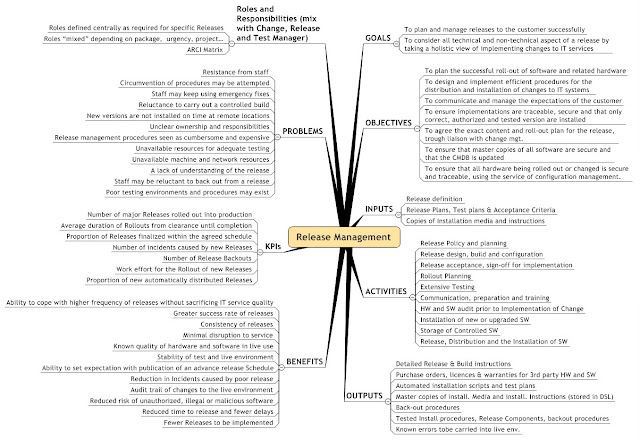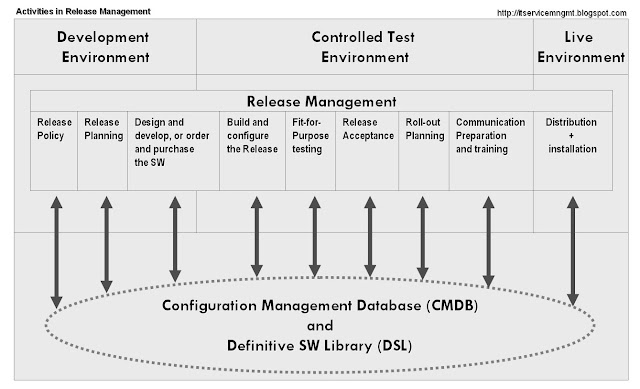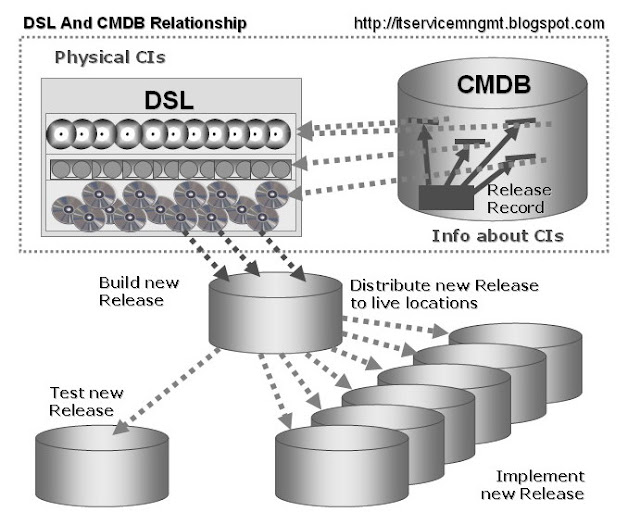"The release of atom power has changed everything except our way of thinking...the solution to this problem lies in the heart of mankind. If only I had known, I should have become a watchmaker.” - Albert Einstein
Release Management is an ITIL process that on first sight looks like a logical part of Change Management, to most heads. As we consider the number of changes and their possible impact in business organizations, it becomes clear where this process came from: practical need to coordinate things.
It has a lot of goals/objectives, but it is not an overly complicated process. It just takes care that all changes are implemented in accordance with other ITSM processes and aligned with business needs.
Here are the main elements of Release Management to have in mind:
Goals
- To plan and manage releases to the customer successfully
- To consider all technical and non-technical aspect of a release by taking a holistic view of implementing changes to IT services
- To plan the successful roll-out of software and related hardware
- To design and implement efficient procedures for the distribution and installation of changes to IT systems
- To communicate and manage the expectations of the customer
- To ensure implementations are traceable, secure and that only correct, authorized and tested version are installed
- To agree the exact content and roll-out plan for the release, trough liaison with Change Management.
- To ensure that master copies of all software are secure and that the CMDB is updated
- To ensure that all hardware being rolled out or changed is secure and traceable, using the service of configuration management.

Inputs
- Release definition
- Release Plans, Test plans & Acceptance Criteria
- Copies of Installation media and instructions
Activities
- Release Policy and planning
- Release design, build and configuration
- Release acceptance, sign-off for implementation
- Roll out Planning
- Extensive Testing
- Communication, preparation and training
- HW and SW audit prior to Implementation of Change
- Installation of new or upgraded SW
- Storage of Controlled SW
- Release, Distribution and the Installation of SW

Outputs
- Detailed Release & Build instructions
- Purchase orders, licences & warranties for 3rd party HW and SW
- Automated installation scripts and test plans
- Master copies of install. Media and install. Instructions (stored in DSL)
- Back-out procedures
- Tested Install procedures, Release Components, backout procedures
- Known errors to be carried into live env.

Benefits
- Ability to cope with higher frequency of releases without sacrificing IT service quality
Greater success rate of releases - Consistency of releases
- Minimal disruption to service
- Known quality of hardware and software in live use
- Stability of test and live environment
- Ability to set expectation with publication of an advance release Schedule
- Reduction in Incidents caused by poor release
- Audit trail of changes to the live environment
- Reduced risk of unauthorized, illegal or malicious software
- Reduced time to release and fewer delays
- Fewer Releases to be implemented
- Resistance from staff
- Circumvention of procedures may be attempted
- Staff may keep using emergency fixes
- Reluctance to carry out a controlled build
- New versions are not installed on time at remote locations
- Unclear ownership and responsibilities
- Release management procedures seen as cumbersome and expensive
- Unavailable resources for adequate testing
- Unavailable machine and network resources
- A lack of understanding of the release
- Staff may be reluctant to back out from a release
- Poor testing environments and procedures may exist
Roles and Responsibilities
Roles and responsibilities of Release Management are divided between Change, Release and Test Managers
- Roles defined centrally as required for specific Releases
- Roles "mixed" depending on package, urgency, project…
- ARCI Matrix (i.e. from RFC-Assessment-development-Testing-Implementing-Audit&Review Closure-CMDB update)
Key Performance Indicators
- Number of major Releases rolled out into production
- Average duration of Rollouts from clearance until completion
- Number of Release Backouts
- Number of incidents caused by new Releases
- Proportion of Releases finalized within the agreed schedule
- Work effort for the Rollout of new Releases
- Proportion of new automatically distributed Releases




15 comments:
Thank you for sharing such a valuable knowledge about the subject. I though I could contribute by adding a Mindmap file for people who have MindManager.
You can download it from
http://www.esnips.com/doc/4576fec0-83f5-4798-a380-7bdd51337403/ReleaseManagementMindMap
Well, nice effort, Rehman, thanx.
doctor,
Is your information copyrighted? Is it originally from you, including the graphics?
Thanks.
Springsman,
copyright is a MF, as you know. I try to hang on a "fair use" side, all of the graphics are made by me, but with such a strong ITIL copyright policy lately, noone is 100% safe. What did you have in mind?
This is great stuff. I was looking for a good starting point for a workshop and this is fantastic.
I think you have a great page here… today was my first time coming here.. I just happened to find it doing a google search. anyway, good post.. I’ll be bookmarking this page for sure.
Pretty good post. I just stumbled upon your blog and wanted to say that I have really enjoyed reading your blog posts
Very informative post, specially for those new to Release Management.
very interesting info ! .
Howdy. Very cool blog!! Guy .. Excellent .. Superb .. I will bookmark your website and take the feeds
Thank-you. I have incuded a website and email address. Is this acceptable? I hope this is allright:)
I’m sending it to a few friends ans also sharing in delicious. And certainly, thanks for your effort!
Spot on reference on Release Management. To implement this process you need a well thought out and customised tool like Plutora Release Manager and Plutora Deployment Manager,
Have a look at the website http://www.plutora.com
Mark,
I have seen your site and browsed thru presentations.
You have an interesting product.
What are the interfaces to other processes, mainly Change and Configuration management?
Most of the tools fail in integration...
Post a Comment